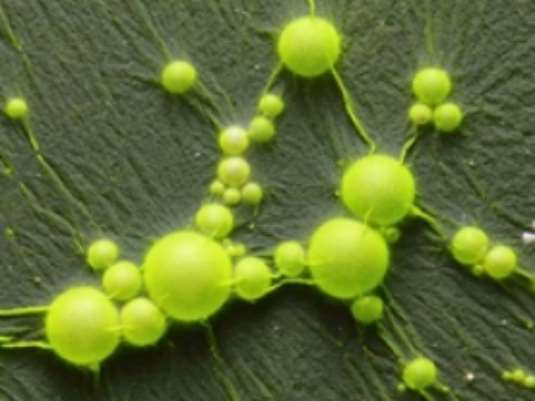Cyanobacteria have received much attention as green catalysts for special biotechnologies because of their metabolic flexibility, single-cell anatomy and high photosynthetic efficiency. They utilize both sugars and carbon dioxide while harnessing the energy of sunlight. This photoheterotrophic mode allows for rapid growth and high cell density, opening up the prospect of sustainable biomanufacturing. As a leading provider of metabolic flux analysis (MFA) services, Creative Proteomics is dedicated to providing reliable and customized cyanobacterial MFA services to help researchers gain further insight into the contribution of different pathways to cyanobacterial growth.

Overview of cyanobacteria as green catalysts
As a type of photosynthetic bacteria, cyanobacteria have specific antenna pigment-protein complexes called phycobilisomes (PBS) that enhance the light-harvesting ability of cyanobacteria. Light energy is transferred from each PBS to chlorophyll (Chl) in both photosystem I (PSI) and photosystem II (PSII). These light-harvesting pigments have different absorption wavelengths, allowing them to survive in a variety of light environments. Cyanobacteria have emerged as promising light-driven green catalysts for the production of biodegradable polymers, biofuels, chemicals, and more. The progress made and the great potential for the future continue to increase interest in the different lifestyles of cyanobacteria, including photoautotrophic fixation of CO2 in the light and heterotrophic growth also occurring in the dark. Currently, the cyanobacterium Synechocystis sp. PCC 6803 is considered to be the model cyanobacterium with a complex glycolytic pathway structure where glucose degradation is intertwined with the CO2-fixing Calvin-Benson-Bassham (CBB) cycle. Although their metabolism has been extensively profiled by flux analysis tools, the contribution of these pathways to photomixotrophic metabolism remains unclear.
Service offering at Creative Proteomics
MFA has been widely used to estimate the metabolic flux distribution in microbial cells under various conditions. Metabolic flux distribution is typically estimated by incubating cells with 13C-labeled glucose as a carbon source and by measuring the 13C-labeling pattern of several intermediates.
We are proud to offer gas chromatography-mass spectrometry (GC-MS)-based 13C-MFA for the elucidation of intracellular fluxes of cyanobacteria. Currently, GC-MS is the cheapest and most widely-used analytical technique for routine 13C-MFA studies, providing sufficient information to estimate fluxes in microbial and mammalian systems with high precision.
Moreover, we also offer 13C isotopic non-stationary metabolic flux analysis (13C-NMFA) services for autotrophic metabolism. 13C-NMFA is similar to 13C-MFA, but its metabolite labeling is measured in the transient state before the system reaches an isotopic steady state. We are able to perform a comparative study of the metabolism of different cyanobacterial strains, providing new insights into the flux dependence of adaptive evolution.
Features of our MFA platform
- The latest knowledge of biology, bioinformatics and software development
- Broad applicability to a wide range of metabolic systems
- Professional bioinformatics teams and personalized bioinformatics analysis services
- Advanced instrumentation platform
- Integrated quantitative methods and one-stop solutions
If you are interested in our services, please contact us. We are looking forward to working with you!
References
- Abernathy, Mary H., et al. "Deciphering cyanobacterial phenotypes for fast photoautotrophic growth via isotopically nonstationary metabolic flux analysis." Biotechnology for biofuels 10 (2017): 1-13.
- Antoniewicz, Maciek R. "A guide to metabolic flux analysis in metabolic engineering: Methods, tools and applications." Metabolic engineering 63 (2021): 2-12.